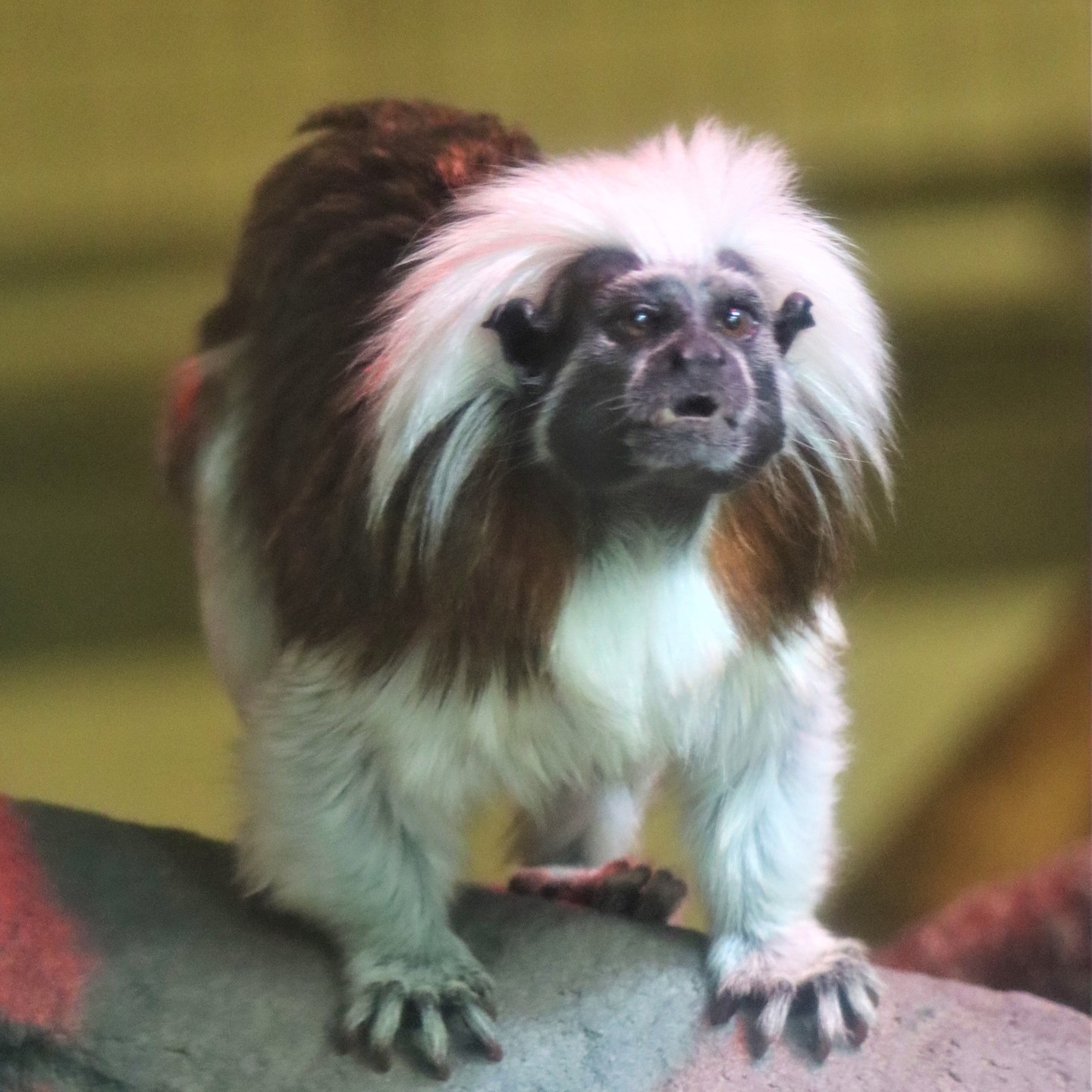Summary:
1. Today is the Day of the Cotton-Topped Tamarin, dedicated to raising awareness about the critically endangered cotton-top tamarin species native to Colombia.
2. Deforestation, hunting, and capture for research and the pet trade are the main threats to the survival of cotton-top tamarins.
3. Denver Zoo recently welcomed its first breeding pair of cotton-top tamarins, Dillinger and Valeria, and is actively participating in their Species Survival Plan.
4. Visitors to the Zoo can have a chance to observe and learn about these precious primates up close.
Today is the Day of the Cotton-Topped Tamarin, where we celebrate and raise awareness about these incredibly special and critically endangered primates. Native to Colombia, cotton-top tamarins hold an important place in the region’s fragile ecosystem However, they face numerous threats, pushing them dangerously close to extinction.
ODeforestation is one of the main reasons for the decline in cotton-top tamarin populations. As the lush forests of Colombia are cleared to make way for agriculture and urban development, these tiny primates lose their natural habitat and struggle to find suitable areas to live and thrive. The destruction of their forest homes disrupts the decosystem’s delicate balance depriving them of food sources and shelter.
Another major threat to the survival of cotton-top tamarins is hunting and capture. Sadly, hunters illegally capture these adorable creatures for the pet trade. often target these adorable creatures. The demand for these primates, as their unique appearance and playful nature, fuels exotic pets. However, keeping cotton-top tamarins as pets destroys their well-being and leads to critically endangered status.
Additionally, cotton-top tamarins are frequently captured for research purposes. Scientists are keen to study their behavior, social structure, and unique vocalizations. While research is essential for understanding and conserving this species, it is conducted ethically and with minimal disturbance to their natural habitats. is crucial
On a more positive note, Denver Zoo was happy to welcome its first breeding pair of cotton-top tamarins, Dillinger and Valeria. Earlier this year, Dillinger, a charismatic 12-year-old male, arrived from Northeastern Wisconsin Zoo, while Valeria, a charming six-year-old female, made her journey from Alexandria Zoo. This marks an important moment for both Denver Zoo and the Species Survival Plan (SSP) as we seek to protect and increase the population of this beautiful and endangered primate.
Participating in the SSP allows us to work closely with other accredited zoos to ensure the long-term survival of cotton-top tamarins. We are committed to providing them a safe and stimulating environment, replicating their natural habitat as closely as possible. By carefully managing their breeding program, we hope to contribute to these primates’ recovery and eventual removal from the critically endangered list.
During your next visit to the Zoo, don’t miss the opportunity to meet Dillinger and Valeria in person. Observing these incredible creatures up close provides visitors with a unique and memorable experience and fosters a sense of connection and understanding of the importance of conserving their species.
Cotton-top tamarins are easily distinguished by their striking white head crest, which gives them their name. These tufts of hair are unique to each individual, much like a human fingerprint. They also have vibrant golden fur on their backs and a long, intricate tail that helps them maintain their balance as they leap through the forest canopy. Their small size and agile nature make them excellent climbers, specialized for life in the trees.
These tiny primates are highly social animals and live in family groups of around 6 to 13 individuals. They communicate with each other using a variety of calls, including trills, chirps, and whistles. I observe their sophisticated social dynamics and how they care for their offspring. Is fascinating. Both males and females take an active role in parenting, sharing responsibilities such as carrying the young and helping with grooming.
Getting involved and spreading awareness about the plight of cotton-top tamarins is crucial for their survival. By supporting conservation efforts, such as those undertaken by Denver Zoo and other organizations, we can help protect and preserve these enchanting creatures for future generations. Every small action, whether educating others about the importance of sustainable practices or donating to conservation projects, contributes to making a difference.
Today, on The ay of the Cotton-Topped Tamarin, let us celebrate the resilience and beauty of these incredible creatures. They are a reminder of the extraordinary diversity and wonders of the natural world and the urgent need to protect it. So, join us in raising awareness about the critically endangered cotton-top tamarins. Together, we can create a future where these precious primates thrive and continue to enchant us with their presence.
*****
Source Description
Today is The day of the Cotton-Topped Tamarin, dedicated to raising awareness for these precious primates. Cotton-top tamarins are native only to Colombia and are a Critically Endangered species. They’re endangered due to deforestation, hunting and capture for research and the pet trade.
Earlier this year, we welcomed our first cotton-top tamarin breeding pair to Emerald Forest. Dillinger is a 12-year-old male who moved from Northeastern Wisconsin Zoo and Valeria, our six-year-old female named, moved from Alexandria Zoo. Cotton-top tamarins are a new species to Denver Zoo, and we’re to care for them and participate in their Species Survival Plan. Be sure to say hi to Dillinger and Valeria during your next visit to the Zoo!
Photo Credit: Volunteer Mark Rinker

